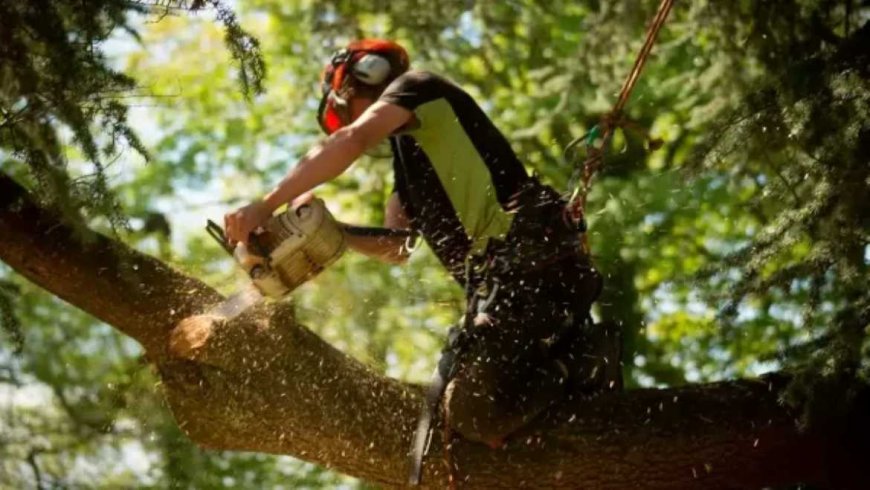Tree Removal: Everything You Need to Know Before Cutting Down a Tree
Tree removal is more than cutting down a tree—it’s about protecting your home, your safety, and your landscape. Whether you're dealing with a dying tree or just redesigning your yard, working with a certified tree removal professional ensures the job gets done right.

Tree removal might sound simplejust cut it down and youre done, right? Not quite. Whether its a dead tree posing a danger or an overgrown giant damaging your foundation, tree removal is a serious job that requires expertise, planning, and proper tools.
This guide covers when tree removal is necessary, the process involved, costs, risks, and how to choose the right professionals.
? When Is Tree Removal Necessary?
You dont just cut a tree down on a whim. Here are common signs its time:
1. Dead or Dying Tree
A tree with no leaves, peeling bark, and brittle branches may be beyond savingand dangerous to keep around.
2. Disease or Pest Infestation
Fungal infections, beetles, and other infestations can spread to other trees if not removed.
3. Leaning or Unstable Structure
A tree suddenly leaning or cracked at the base poses a significant risk to buildings and people.
4. Roots Damaging Property
Tree roots can crack sidewalks, damage plumbing, or lift your driveway.
5. Too Close to Structures or Power Lines
Trees that grow too close to homes, garages, or electrical wires may need to be removed for safety reasons.
6. Blocking Views or Construction
Sometimes trees are in the way of development, renovations, or simply obstructing your view or sunlight.
?? The Tree Removal Process Step-by-Step
1. Tree Inspection
A certified arborist assesses the trees condition and determines the safest removal method.
2. Permit Check
In many areas, especially urban zones, you need a permit before removing certain trees. Always check local regulations.
3. Equipment Setup
Depending on the tree size and location, pros may use chainsaws, cranes, rigging ropes, and wood chippers.
4. Branch and Limb Removal
Large limbs are cut first to reduce the weight and avoid damage to nearby structures.
5. Trunk Sectioning
The trunk is cut down in sections from the top down, ensuring control and safety.
6. Stump Removal (Optional)
You can either leave the stump, grind it, or remove it entirely.
? Tree Removal Safety Precautions
Tree removal can be dangerousespecially around buildings, roads, or power lines. Professional teams take precautions such as:
-
Roping and harnesses
-
Ground crew coordination
-
Traffic or pedestrian control (for urban areas)
-
Contacting utility companies when lines are involved
Never try to remove a large tree on your own. Its one of the most hazardous DIY tasks.
? Why Hire a Tree Removal Professional?
?? Experience & Skill
Trained professionals know how to handle complex or risky removals safely.
?? Equipment
They have access to cranes, bucket trucks, and professional-grade saws.
?? Insurance
Insured companies protect you from liability if something goes wrong.
?? Clean-Up Included
Professionals usually include branch and debris removal, sometimes even firewood processing.
? How Much Does Tree Removal Cost?
Several factors affect pricing:
| Factor | Impact on Cost |
|---|---|
| Tree height & diameter | Taller, thicker trees cost more |
| Tree type | Hardwood trees are harder to cut |
| Location | Hard-to-access areas cost more |
| Condition | Dead trees may be more brittle and risky |
| Emergency removal | Costs more than scheduled work |
| Stump removal | Usually not included in base price |
Average Costs:
-
Small tree (under 30 ft): $150$500
-
Medium tree (3060 ft): $400$1,000
-
Large tree (over 60 ft): $800$2,000+
Always get a detailed estimate that includes disposal and stump grinding if needed.
? What Happens to the Tree After Removal?
Once removed, you have a few options:
-
Chipped into mulch (great for gardens!)
-
Cut into firewood
-
Hauled away by the service provider
-
Left on-site for personal use or disposal
Ask your tree service about eco-friendly disposal options.
? Tree Stump Options
After the tree is gone, you're left with a stump. What now?
Option 1: Leave It
Can become a natural seat or decoration, but may attract pests or regrow.
Option 2: Stump Grinding
Quick and affordable. Grinds down 612 inches below ground.
Option 3: Full Stump Removal
Digging out the entire root system. More labor-intensive and costly, but cleanest option.
? Best Time of Year for Tree Removal
-
Winter or early spring is ideal. Trees are dormant, and theres less foliage to deal with.
-
Emergency removal can happen any time, especially after storms.
? Alternatives to Tree Removal
Not every problem tree needs to be cut down. Consider:
-
Pruning or thinning to reduce weight
-
Cabling/bracing to support weak limbs
-
Disease treatment by a certified arborist
Always explore your options before removing a treeespecially heritage or native species.
?? Do You Need a Permit?
Many municipalities require tree removal permitsespecially for trees above a certain diameter or on public property.
Check with:
-
Your citys arborist
-
Local planning or zoning office
-
HOA if you live in a managed neighborhood
Fines for unauthorized removal can be steep, so always do your homework.
? Benefits of Professional Tree Removal
-
Prevents property damage
-
Improves safety
-
Boosts curb appeal
-
Frees up space for landscaping or building
-
Eliminates pest and disease risk from dead trees
? Conclusion
Tree removal is more than cutting down a treeits about protecting your home, your safety, and your landscape. Whether you're dealing with a dying tree or just redesigning your yard, working with a certified tree removal professional ensures the job gets done right.
Before grabbing a chainsaw, consider the risks, rules, and rewards of proper tree removal. Its worth doing it the smart, safe way.
? FAQs About Tree Removal
1. How do I know if a tree needs to be removed?
If it's dead, diseased, leaning, or damaging structures, it's time to consult a pro.
2. Can I remove a tree myself?
Small treesmaybe. Large treesdefinitely not. It's dangerous without training and tools.
3. Does tree removal include the stump?
Not always. Stump grinding is often an additional service.
4. Will my insurance cover tree removal?
If the tree damages your home, yes. Otherwise, usually not.
5. How long does tree removal take?
Anywhere from 18 hours depending on tree size and complexity.












































